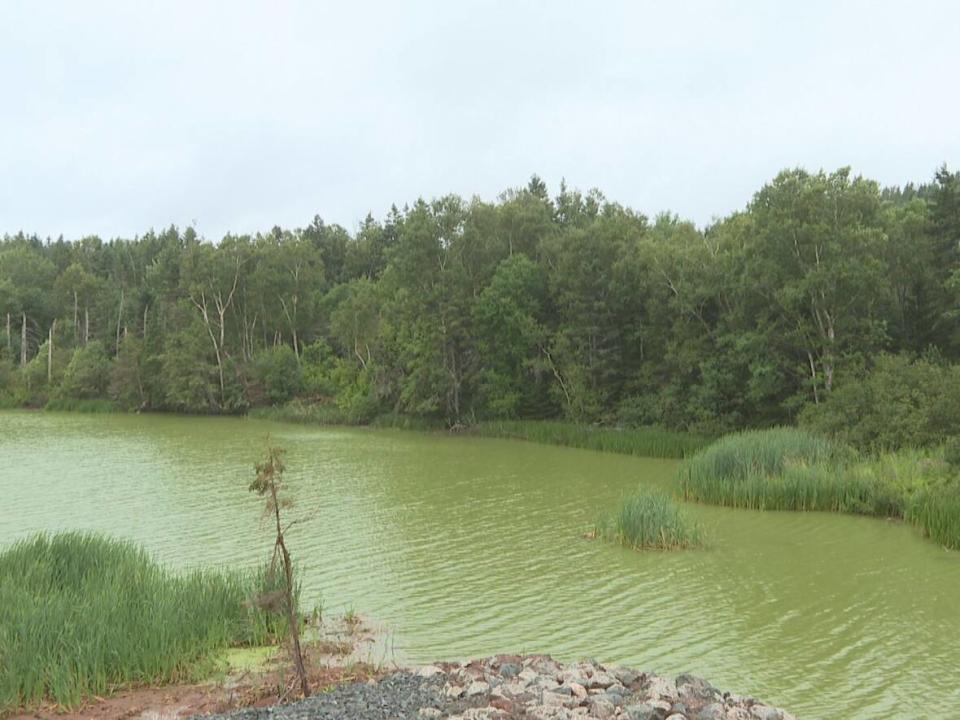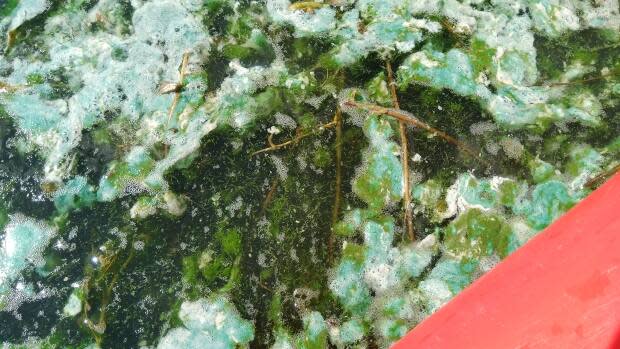2nd blue-green algae bloom found on P.E.I., this time in Murray River

P.E.I. issued another blue-green algae bloom advisory on Wednesday, after the microscopic organisms causing the phenomenon were found in Murray River's MacLures Pond.
Just a day before, the province announced it had discovered blue-green algae in Black Pond near Souris. That was the first time in two years that such a bloom had been reported in the province.
Also known as cyanobacteria, blue-green algae are clusters of microscopic organisms that can produce toxins harmful to humans and animals.
"The common consensus is that it's caused under 'eutrophic' conditions, or highly nutrient-enriched conditions," said Cindy Crane, a biologist with the provincial Environment Department who deals with surface water issues.
"We used to think it was mostly phosphorus, but current thinking is that it depends on basically the ratio of phosphorus to nitrogen in the environment that cause it to grow. It also needs the light and heat and a few other environmental factors."
Crane said those conditions aren't unusual in P.E.I., and human activity like agriculture and septic systems can release such nutrients.

"It's not something that's been introduced or brought here or anything like that," she said, when asked about the bloom near Souris. "That is probably a normal part of the aquatic life that's present in Black Pond.
"It's just that this particular time something has triggered it to to go into that bloom state."
Blooms rare on P.E.I.
But blue-green algae blooms are fairly rare in P.E.I., with only 13 other instances recorded since 2004. The last blue-algae advisory before this week's two discoveries was issued in 2020.
Ryan Neale, manager of environmental health with the Chief Public Health Office, said the province treats the blooms with "great caution."
Public Health advises people to avoid drinking or even touching the water because it could cause symptoms such as skin irritation, rash and sore eyes.
"Individuals aren't typically drinking surface water," Neale said. "But if you are swimming in the water, especially if you have young children, they may have just some of the water and [that] can potentially lead to some of those symptoms."

No matter where you're swimming, he said, it's always a good idea to shower afterwards.
If dogs or other animals jump into water hosting a blue-green algae bloom, the organisms can cause severe illness or even death.
Flagging another danger, the province warned in both bloom alerts issued this week: "It is advised to avoid consumption of fish caught in this area."
Islanders asked to report blooms
Crane said that people should report signs of blue-green algae blooms so it can be tested.
Some signs to watch out for in the water:
a noticeable bright turquoise hue
specks
vegetation that looks like short grass clippings
She said the blooms could last from several weeks to a month, dissipating more quickly if the weather turns cooler.
Around North America, blooms are often found in non-flowing freshwater during hotter parts of summer.

